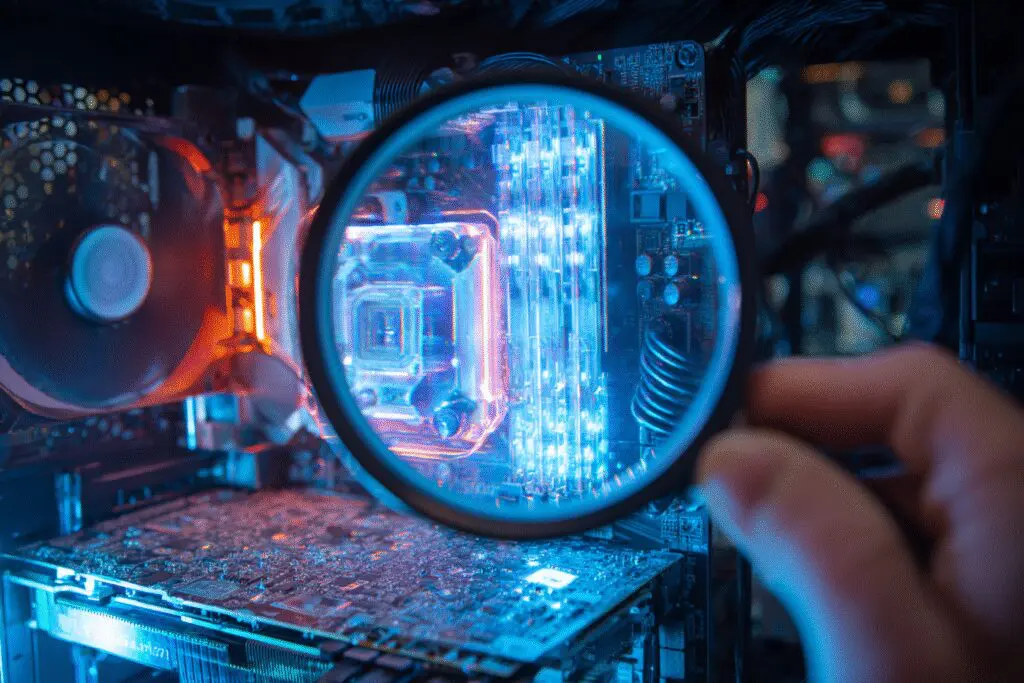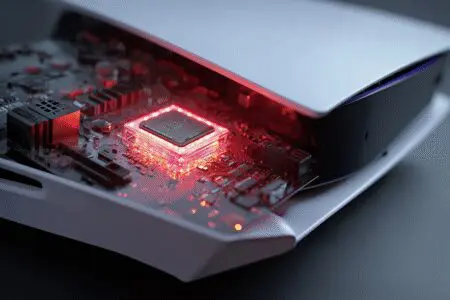Have you ever stared at the “system requirements” for a hot new video game, a sense of dread slowly creeping in? You see the minimum and recommended specs, and one line stands out: the graphics card. Suddenly, you’re hit with a critical question: what graphics card is actually inside my computer? It’s a surprisingly common moment of uncertainty. For many, a PC is just a box that works, until it doesn’t—or until you want it to do something new, like run Baldur’s Gate 3 on ultra settings.
The good news is that you don’t need to be a computer wizard to find out. In fact, learning how to see what graphics card you have is a fundamental PC skill that’s easier to acquire than you think. There are several ways to do it, ranging from a five-second check to a deep dive into your system’s soul. We’re going to walk through them all, starting with the absolute fastest method. Forget digging for old receipts or trying to remember specs from years ago. You can get your answer in the time it takes to read this paragraph.
More in Graphics Cards Category
Is Integrated Graphics Good for Gaming
What’s the Absolute Fastest Way to Check Your Graphics Card?
Let’s cut right to the chase. You’re busy, and you just want the name of the component so you can get back to what you were doing. Thankfully, Windows has a built-in tool that gives you this information instantly.
Why is the Task Manager Your Best Friend for a Quick Look?
I use this method constantly. It’s muscle memory for me at this point, and it should be for you, too. The Windows Task Manager, long known for ending misbehaving programs, has evolved into a handy performance monitor. It provides a real-time snapshot of what your hardware is doing, including your Graphics Processing Unit (GPU).
Here is the dead-simple, two-step process:
- Press Ctrl + Shift + Esc on your keyboard to open the Task Manager directly.
- Click on the “Performance” tab. If you don’t see any tabs, you might be in the simple view; just click “More details” at the bottom.
Once you’re in the Performance tab, look down the left-hand column. You’ll see CPU, Memory, Disk, and so on. Find and click on “GPU”. Sometimes you might even see “GPU 0” and “GPU 1.”
Voila! In the top-right corner of the window, you’ll see the name of your graphics card in bold letters. For example, it might say “NVIDIA GeForce RTX 4070” or “AMD Radeon RX 7800 XT.” That’s it. That’s the answer you were looking for. This screen also shows you other cool, real-time data like how much of the GPU’s power is currently being used and its current temperature, which is incredibly useful. For a quick ID, this is my go-to method 99% of the time.
How Can I Get More Details Using Built-in Windows Tools?
The Task Manager is fantastic for a quick name-check, but sometimes you need more information. You might be troubleshooting a problem, or perhaps you’re just curious about the finer details like driver versions or the exact amount of video memory your card has. Fortunately, Windows has a couple of other tools that dig a little deeper.
What is the Device Manager and What Does It Tell You?
The Device Manager is like an inventory list for every single component connected to your computer. It’s the official record-keeper of your hardware. Consequently, it’s a reliable place to confirm what GPU you have.
Getting there is straightforward. You can right-click the Start button and select “Device Manager” from the menu. Alternatively, you can just press the Windows key, type “Device Manager,” and hit Enter.
Once the window opens, you’ll see a list of categories. You’re looking for one called “Display adapters.” Click the little arrow next to it to expand the category, and there it is—the name of your graphics card.
This method is particularly useful if you’re experiencing problems. I once had a friend whose brand-new gaming PC was running terribly. We opened Device Manager, and under “Display adapters,” it just said “Microsoft Basic Display Adapter.” That’s a classic sign that the proper drivers for the graphics card weren’t installed. The PC was using a generic, low-power mode. Device Manager didn’t just identify the problem; it pointed us directly to the solution.
Ever Heard of the DirectX Diagnostic Tool (DxDiag)?
Now we’re digging into a tool that feels a bit more old-school but is an absolute powerhouse of information. The DirectX Diagnostic Tool, or DxDiag, is designed to help you troubleshoot issues related to video and sound. It collects a vast amount of data about your system’s multimedia capabilities.
To launch it, follow these steps:
- Press the Windows Key + R to open the Run dialog box.
- Type
dxdiagand press Enter. - You might get a pop-up asking if you want to check if your drivers are digitally signed. It’s safe to click “Yes.”
The tool will open after a moment, and you’ll see several tabs along the top. The first tab, “System,” gives you a general overview. However, you want to click on the “Display” tab. If you have a laptop with both integrated and dedicated graphics, you might see “Display 1” and “Display 2.” One of them will be your main graphics card.
Here, you’ll find a treasure trove of information. Not only will you see the card’s name, manufacturer, and chip type, but you’ll also get precise details on its video memory (VRAM), the current display mode, and, crucially, the exact driver version and date. This level of detail is indispensable when you’re trying to figure out if a driver update is what you need to fix a flickering screen or a crashing game.
What If Windows Doesn’t Give You a Clear Answer?
Sometimes, things aren’t so simple. You follow the steps above, but instead of seeing a nice, clean name like “NVIDIA” or “AMD,” you see something generic and unhelpful. Don’t panic; this is usually an easy fix.
Why Does My Graphics Card Show a Generic Name?
The most common reason for seeing a name like “Microsoft Basic Display Adapter” or “Standard VGA Graphics Adapter” is a driver issue. Think of drivers as the instruction manual that tells your Windows operating system how to communicate with a piece of hardware. Without the correct driver, Windows knows something is there, but it doesn’t know what it is or how to use its advanced features.
This often happens after a fresh Windows installation or if a driver update went wrong. Your display will work, but you won’t be able to play games, use multiple monitors properly, or even set your screen to its native resolution.
How Do I Find the Right Drivers for My Card?
If you’re stuck with a generic adapter name, your mission is to install the official drivers directly from the manufacturer. There are three main players in the GPU market: NVIDIA, AMD, and Intel. Your card is almost certainly made by one of them.
First, you need to identify which one. Even with a generic name, you can sometimes find clues. Go back to the Device Manager, right-click the adapter, go to “Properties,” then the “Details” tab. In the “Property” dropdown, select “Hardware Ids.” The string of text you see will often contain “VEN_10DE” for NVIDIA, “VEN_1002” for AMD, or “VEN_8086” for Intel.
Once you know the manufacturer, head straight to their official website:
- For NVIDIA cards (usually named GeForce), go to their driver download page.
- For AMD cards (usually named Radeon), go to their driver support site.
- For Intel graphics (often integrated into the CPU), go to their download center.
These sites have tools that can auto-detect your hardware and recommend the correct driver. Just download and run the installer. After a restart, your PC will correctly recognize your graphics card, and you’ll unlock its full potential.
Are There Third-Party Apps That Provide Even More Information?
The built-in Windows tools are great for identification and basic troubleshooting. But what if you want to know everything? I’m talking about real-time clock speeds, memory bandwidth, fan speeds, and the exact manufacturing process of your GPU’s core. For that, you’ll want to turn to some excellent free third-party utilities.
Why Would You Need a Third-Party Tool Anyway?
You might want a dedicated tool for a few reasons. Firstly, they provide a much deeper level of detail than Windows tools. Secondly, they are essential for monitoring performance while you’re gaming or doing intensive work. Finally, they are indispensable for enthusiasts who are into overclocking—pushing their hardware beyond its factory settings for more performance.
What is GPU-Z and Why is it So Popular?
If there’s one tool that every PC enthusiast has, it’s GPU-Z. It’s a tiny, free program that requires no installation (you can just run it). Despite its small size, it gives you an exhaustive breakdown of every technical specification of your graphics card.
When you open it, you’ll be presented with a dense but well-organized window showing:
- The full GPU name and codename.
- The technology process (e.g., 7nm).
- The memory type (e.g., GDDR6X) and amount.
- The memory bus width and bandwidth.
- The base and boost clock speeds.
It also has a “Sensors” tab that provides a live feed of your GPU’s clock speeds, temperature, fan speed, and power consumption. If you’re a massive nerd for hardware specs like I am, GPU-Z is non-negotiable. It tells you absolutely everything.
What About Software from My GPU Manufacturer?
Another powerful option is the software that comes directly from your GPU’s manufacturer. Both NVIDIA and AMD offer comprehensive software suites that do much more than just identify your card.
NVIDIA’s package is called GeForce Experience, and AMD’s is Adrenalin Software. These tools are your command center. They automatically check for and help you install the latest drivers, which is their most important function. Beyond that, they can optimize the graphics settings for your installed games with a single click, allow you to record and stream gameplay, and give you access to other advanced features. If you have one of these installed, it will prominently display your graphics card model.
Understanding What You’re Looking At: A Quick GPU Primer
So now you have the name of your graphics card. But what does it all mean? A name like “NVIDIA GeForce RTX 4070 SUPER” can be a bit of a mouthful. Here’s a quick guide to making sense of it.
What’s the Difference Between an Integrated and a Dedicated GPU?
You might notice that your system lists two GPUs, especially on a laptop. This is because you have both integrated and dedicated graphics.
- Integrated Graphics: This GPU is built directly into your main processor (CPU). It’s power-efficient and perfectly fine for everyday tasks like browsing the web, watching videos, and office work.
- Dedicated Graphics: This is a separate, powerful card that slots into your motherboard. It has its own dedicated memory (VRAM) and is a powerhouse designed specifically for demanding tasks like gaming, video editing, and 3D modeling.
Your computer is smart enough to switch between them automatically, using the integrated GPU to save battery and firing up the dedicated one when you launch a game.
What Do All Those Numbers and Letters in the Name Mean?
GPU names follow a pattern. Let’s take the “RTX 4070” as an example. “RTX” is the series brand from NVIDIA. The “40” represents the generation (in this case, the 40-series). The “70” indicates its performance tier within that generation. Generally, a 4080 is more powerful than a 4070, which is more powerful than a 4060. Suffixes like “SUPER” or “Ti” (for NVIDIA) and “XT” (for AMD) usually denote a slightly more powerful version of the base model.
Why is VRAM (Video RAM) So Important?
You’ll see VRAM listed in tools like DxDiag and GPU-Z, measured in gigabytes (GB). Think of VRAM as your GPU’s personal, ultra-fast workspace. It uses this memory to store the textures, models, and other assets it needs to render a scene. More VRAM allows a GPU to handle higher screen resolutions (like 4K) and more detailed graphics without stuttering. For modern gaming, having a sufficient amount of VRAM is crucial.
Want to Learn More About How GPUs Work on a Deeper Level?
For those who are truly curious about the underlying architecture of these incredible pieces of technology, university computer science departments offer fantastic resources. For instance, Stanford University provides lecture materials on GPU architecture that give a great academic overview of the subject. It’s a fascinating look at what makes these components tick.
Your GPU, Demystified
Knowing your hardware is the first step toward getting the most out of your PC. It’s not about being an expert; it’s about being an informed user. Whether you’re making sure you can run the latest blockbuster game, troubleshooting a frustrating graphical glitch, or planning your next big upgrade, identifying your graphics card is a simple but powerful piece of knowledge to have.
So go ahead, use the Task Manager for that five-second check. Dive into Device Manager or DxDiag if you need more details. Or, embrace your inner enthusiast and fire up GPU-Z to see it all. Whether you’re rocking the latest and greatest or a trusty old workhorse, you now know exactly how to find out what you’re working with.
Frequently Asked Questions – How to See What Graphics Card You Have

What are the key differences between integrated and dedicated graphics cards?
Integrated graphics are built into the CPU and share system memory, making them less powerful but more energy-efficient and cheaper. Dedicated graphics cards are separate components with their own processor and memory, providing much higher performance for gaming, video editing, and graphic design.
How do I find my graphics card information in Device Manager?
Right-click the Start button and choose Device Manager. Expand the ‘Display adapters’ section, and your graphics card’s name will be listed there, providing a straightforward way to identify it.
What is the easiest method to check my graphics card in Windows Task Manager?
Open Task Manager by pressing Ctrl + Shift + Esc, click More details if needed, then go to the Performance tab and select GPU to view your graphics card’s name and activity.
How can I find my graphics card using the DxDiag tool on Windows?
To use DxDiag, press Windows key + R to open the Run box, type dxdiag, and press Enter. When the DxDiag window appears, click the Display tab to see the name and details of your graphics card.
Why is it important to know your graphics card on a Windows PC?
Knowing your graphics card, or GPU, is important because it handles visuals like images, videos, and games. It helps determine if your computer can run new games and software smoothly and is essential for troubleshooting and updating drivers.




